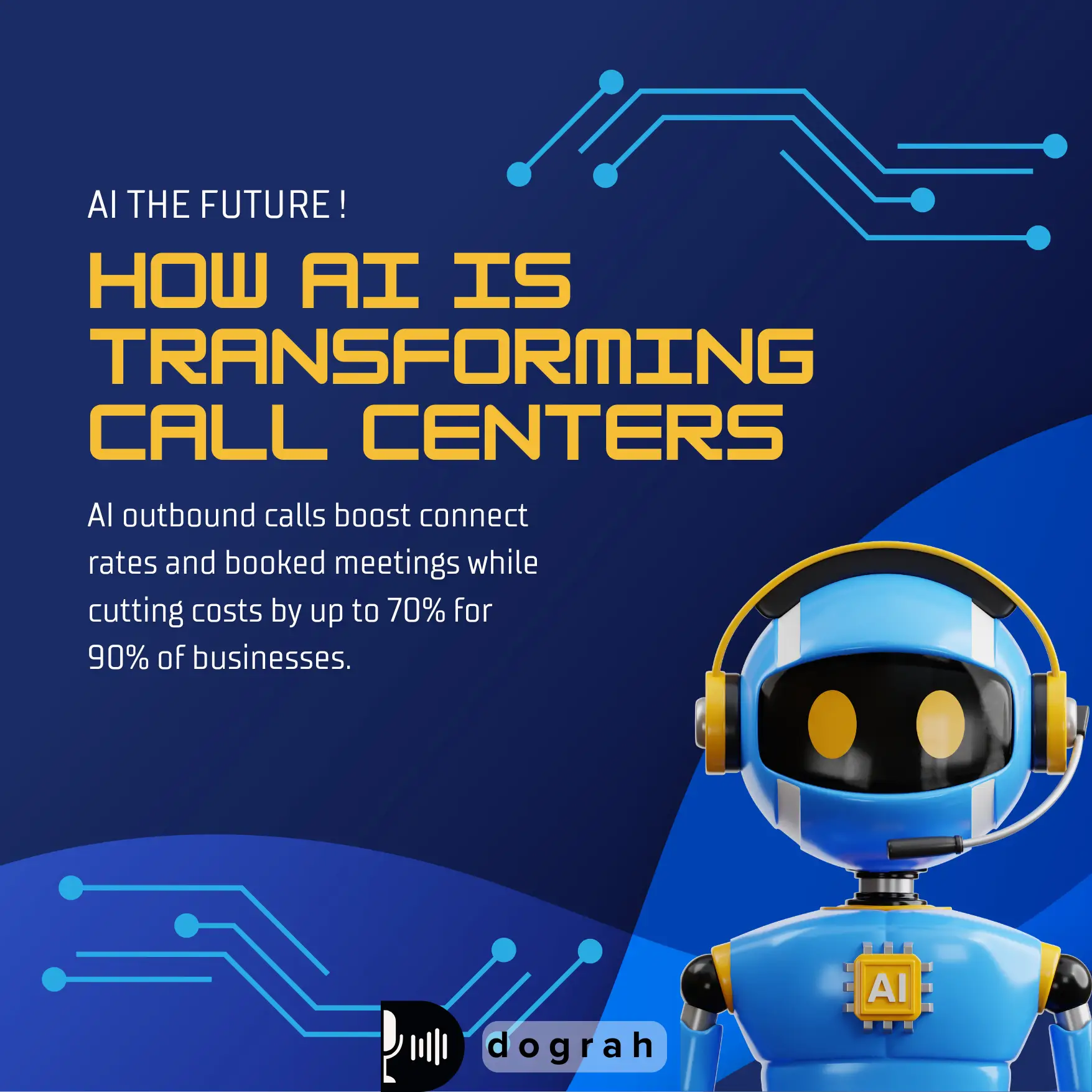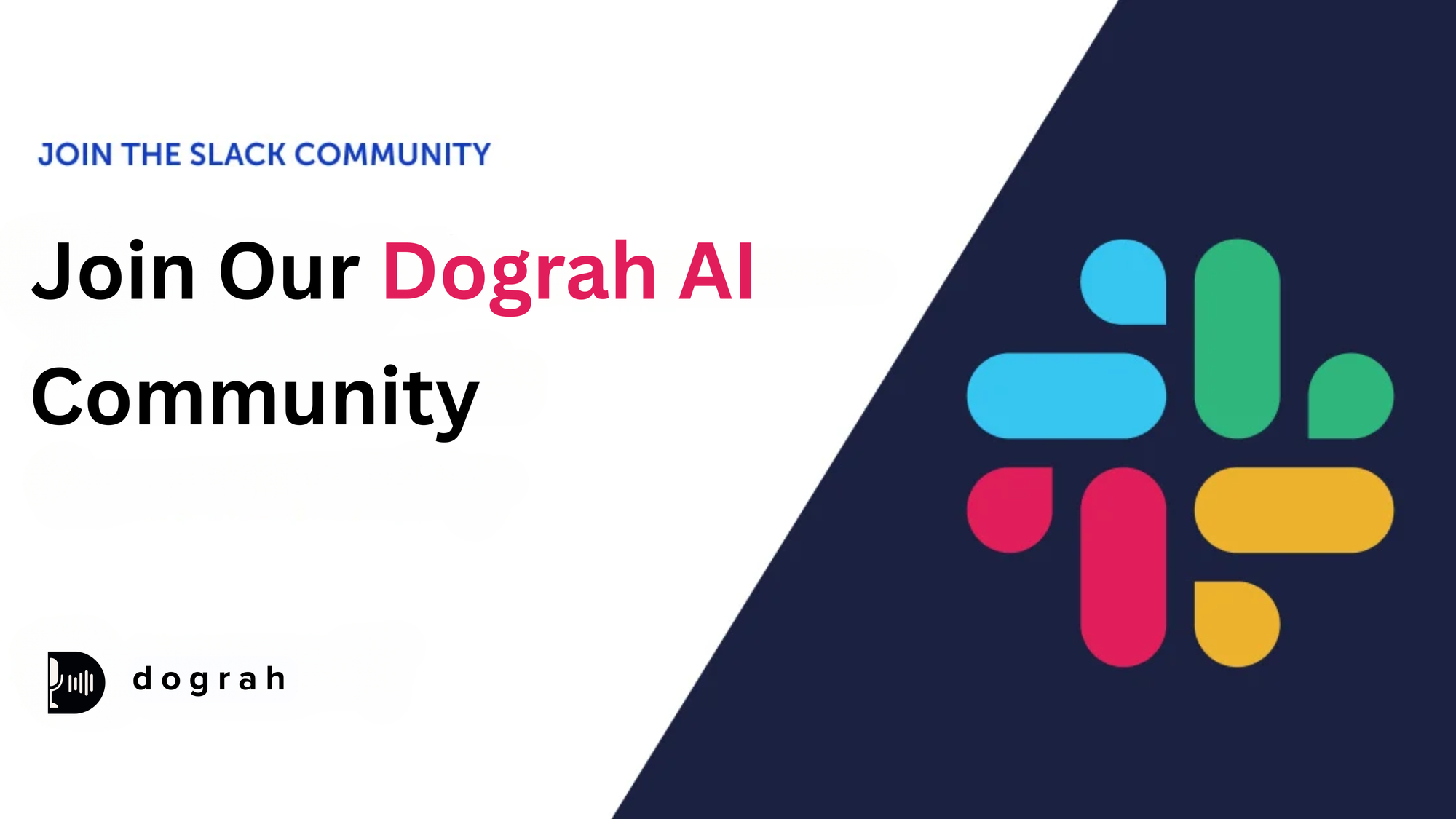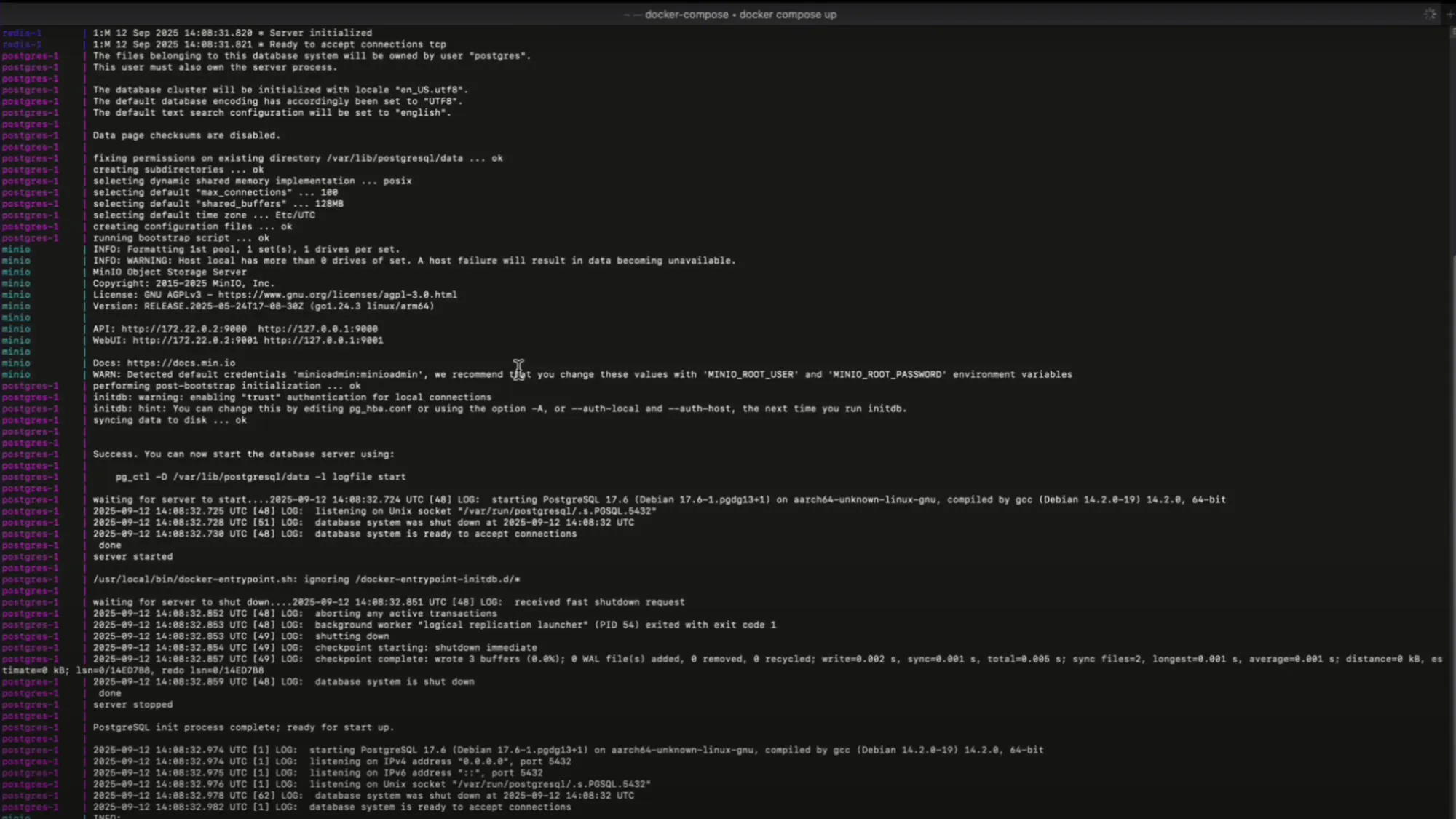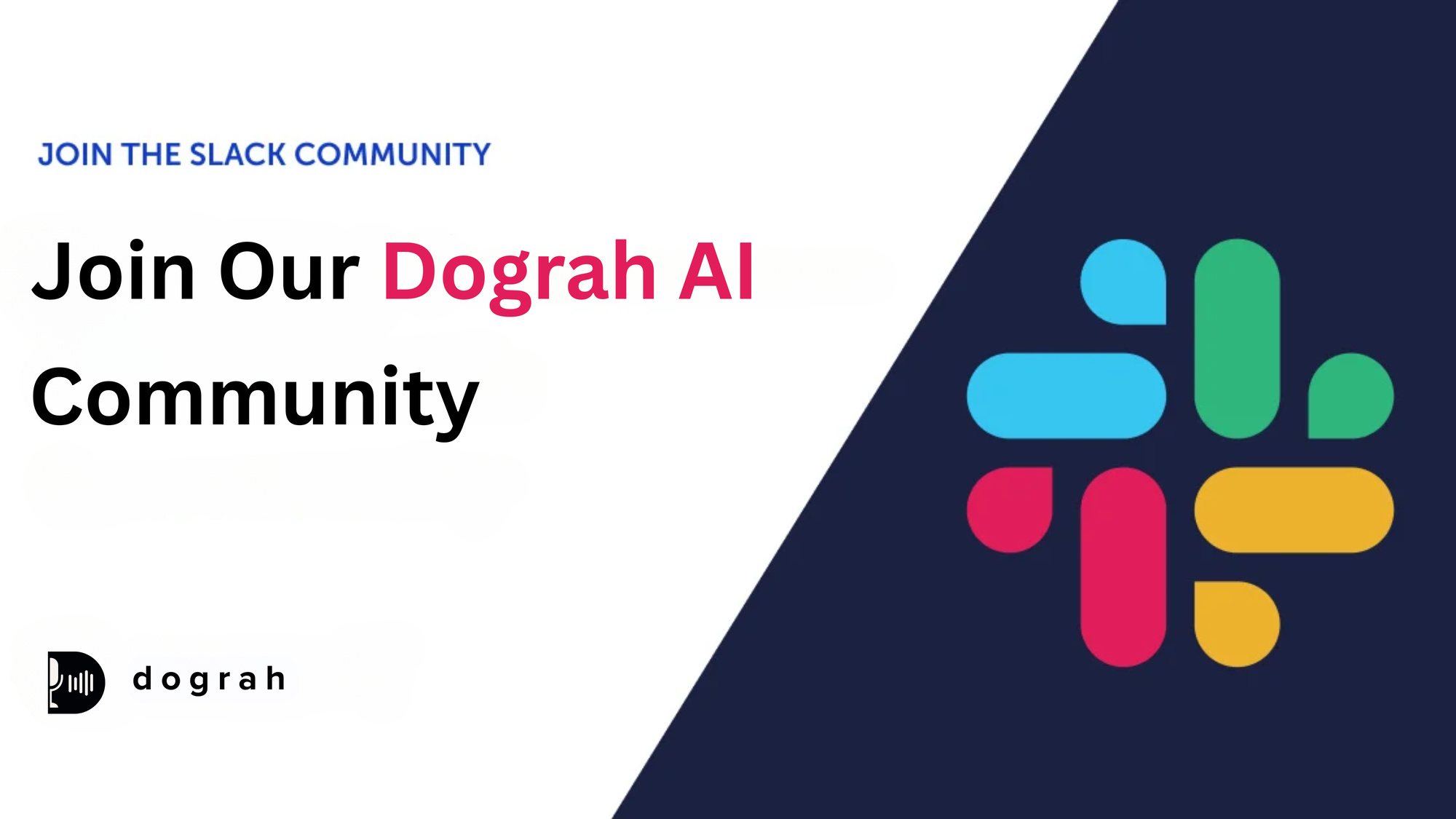Making AI Outbound Calls Work: A Technical Guide for Call Centers

AI outbound calls are reshaping the call center scene with impressive results. that use this technology see better consistency in customer experience across their touchpoints. Our data shows outbound AI systems reach 50-80% connect rates and boost booked meetings by 55%. This technology helps businesses cut costs by 70% through simplified processes and lower staffing needs 90% of businesses.
The benefits of AI-based outbound calls extend beyond saving money. Companies see their lead conversion rates jump by 30% after they start using it. The system works around the clock and pushes customer involvement up by 50%. AI agents excel at handling high-volume campaigns and can process thousands of calls at once with responses under 200ms. The automated outbound call systems let human agents tackle complex tasks while AI handles routine calls. This smart division of work makes teams more efficient.
This piece will walk you through the architecture, setup methods, and performance standards of successful AI outbound call systems. You will learn practical ways to use this technology in your call center setup.
System Architecture for AI-Based Outbound Calls
A well-laid-out architectural foundation stands behind every successful AI outbound call system. Modern AI calling systems get remarkable results through carefully designed components that work together. The old monolithic systems are nowhere near as effective. Here's a deep dive into the key architectural elements that make these systems tick.
Modular Design of AI Agent for Outbound Calls
High-performing AI outbound calling systems rely on modular design principles at their core. Developers can connect different components—prompts, tools, memory, and logic—into one cohesive system. AI agents use open-source frameworks that offer both synchronous and streaming output capabilities to handle thousands of concurrent users.
The modular structure has these components:
- Conversational AI Module: Handles natural language processing and context management
- Decision Engine: Determines appropriate responses based on customer input
- Workflow Management: Controls call flow and conditional logic paths
- Analytics Layer: Tracks performance metrics and conversation outcomes
New technologies can upgrade individual components without rebuilding the whole system - the strategic limits placed on AI to maintain safe, reliable behavior- becomes a design strength rather than a limitation. The core team can give different agents varying capabilities based on use case, trust level, and regulatory requirements Boundedness.
Integration with CRM and Telephony APIs
The connection between AI outbound calls and existing business systems plays a vital role in the architecture. AI-based software merges with legacy systems to maintain uninterrupted operations and better scalability. These systems automatically update call logs, customer feedback, and engagement history within CRM platforms using up-to-the-minute data analysis.
Telephony APIs like Twilio serve as the infrastructure backbone. A phone number imported into systems like Vapi allows smooth connections between form submissions and automated outbound calls. The telephony layer needs:
- JWT authorization for secure API access
- Voice call record creation and management
- Real-time transcription capabilities
- Omni-channel flow execution for routing
These APIs help the system start calls, manage telephony functions, and route conversations. The system can continue with AI handling or transfer to human agents when needed.
Role of LLMs and TTS Engines in Call Flow
LLMs and text-to-speech (TTS) engines work together to create natural interactions during AI outbound calls. The caller's speech converts to text using speech-to-text technology. NLP-powered AI processes this text to understand and create an appropriate response.
Large language models like Anthropic's Claude or Meta's Llama power the GenAI component based on each use case's specific requirements. TTS engines turn the AI's response back into speech using natural-sounding voices that boost engagement.
Latency optimization remains a crucial architectural consideration. Up-to-the-minute applications need quick responses for smooth interactions. Some systems use context-aware chunking and adjust the size and timing of audio segments based on content and context. This optimization makes conversations feel more immediate and natural by reducing the time-to-first-audio up to 10 times.
The architecture balances technical sophistication with practical performance considerations. This balance creates a system that delivers both intelligence and reliability for effective AI outbound calls.
Materials and Methods: Building the AI Outbound Call Stack
Building an AI outbound call stack that works well needs three key things: quality datasets, smart workflow design, and good latency management. You'll need specific technical approaches to make conversations feel natural and responsive.
Dataset Preparation for Voice AI Training
Quality voice datasets are the backbone of any good AI outbound call system. Audio recordings for AI training should contain just one utterance and be to process well. The AI voice's performance depends on how good these recordings are under 15 seconds long.
Your recordings should meet these specs to get production-grade results:
- Made in quiet spaces with good microphones
- Same volume, speaking speed, and tone patterns throughout
- Transcriptions that match the audio perfectly
- Sorted by type (utterances, phonetic coverage, etc.)
"A heavy accent can reduce your pronunciation score and affect the generated digital voice," Microsoft's documentation points out. Pronunciation scoring systems can review audio quality to get the best results. usually mean there are speech errors or script mismatches you need to fix before training Scores below 70.
Modern AI platforms can help organizations that don't have pre-segmented audio. These platforms split longer recordings into proper utterances automatically. They add natural pauses between utterances (0.5-1 second) to make training more effective.
Workflow Scripting with Conditional Logic
AI outbound calls work best with smart workflow scripts that use conditional logic to guide conversations naturally. Branch connectors are the building blocks here. They work like "switch statement generators" that take action based on different conditions.
Conditional logic in AI workflows lets you create dynamic conversation paths without knowing much code. Developers can set up if-then rules to tell AI agents how to handle different customer inputs and situations. A typical workflow might handle product questions differently from tech support issues, or treat new customers differently from long-time ones.
Start by mapping out user interactions and decision paths with visual flowcharts. Then use no-code tools with AND/OR operators to build detailed decision trees. The implementation docs say it best: "clear criteria ensure that the logic behind your decisions is straightforward and minimizes errors in automation".
These conditional statements guide the AI to take specific actions based on what users say. This makes automated conversations feel more personal. Testing is key - begin with simple scenarios and work up to complex ones to check everything works right.
Latency Optimization Techniques for Real-Time Calls
Real-time AI outbound calls need good latency management. Latency - the delay between when an AI system gets input and gives output - affects user experience a lot, especially in real-time interactions.
These metrics need optimization:
- Time to first token (TTFT): Speed of your application's first response
- Output tokens per second (OTPS): How fast it generates after starting
- End-to-end latency (E2E): Total time from request to full response
The whole AI processing pipeline needs work to cut latency while keeping quality. "In production environments, overall system latency extends far beyond model inference time. Each component in your AI application stack contributes to the total latency experienced by users". You'll need to optimize multiple points in the call flow.
Model reduction works well. Zhou explains it simply: "Start with a smaller model: 'A smaller model means fewer computations.' Think about the smallest brain you can get away with... That reduces the response to the millisecond range instead of on the order of seconds". This cuts latency by a lot without losing key features.
Data pipeline optimization helps too. "Edge Processing" cuts delays by doing computations closer to where data comes from. You can speed up data handling by streamlining preprocessing tasks with real-time streaming protocols and parallel processing.
System architecture must handle high volumes well. "Often what we care about is not just latency, but also the scalability of that latency - batch latency, the throughput of the different requests coming in". You should use techniques that handle multiple requests at once, even when they don't arrive at the same time.
Testing and Evaluation of Automated Outbound Calls
Testing rigorously gives the critical foundation that teams need for successful AI outbound calls. Teams can refine performance before deployment. The way companies assess their performance separates market leaders from those who struggle to implement these systems.
A/B Testing of Call Scripts Using Simulation Tools
Call centers today use A/B testing to compare script variations and find winning approaches systematically. Teams develop that focus on testing a single variable to ensure accurate analysis. Random assignment of agents to different script versions eliminates bias in results two distinct script versions.
Developers can test AI-driven conversations in controlled environments through simulation tools before going live. These tools confirm various conditions like SIP proxy functionality, outbound carrier call completion, and geographical outage detection. Some platforms also offer XML scripting capability to certify expected SIP handshakes and add pauses during test scenarios.
Call Success Rate Metrics: Pickup, Engagement, Conversion
Success metrics help track how well AI outbound calls work. The shows what percentage of calls get answered out of total attempts, which helps learn about contact list quality and calling strategy effectiveness. Call Connection Rate tells us what percentage of calls reach actual humans rather than voicemail Answer Success Rate (ASR)
Conversion metrics extend beyond basic pickup rates to measure desired outcomes:
- Conversion Rate: Percentage of calls resulting in sales, appointments, or other desired actions
- First Call Close (FCC): Percentage of calls achieving successful outcomes on first attempt
- Call Duration: Measuring engagement level throughout conversations
Advanced systems track conversion trends across multiple time periods (past hour, 3 hours, 6 hours, 12 hours, and 24 hours) to spot patterns and improve performance.
Sentiment Analysis Accuracy in Post-Call Summaries
AI-powered sentiment analysis tracks emotional tones in conversations and categorizes them as positive, neutral, or negative based on keywords, phrases, and tone. Each conversation gets both a sentiment score and a numerical confidence score between 0-100% to show reliability.
Sentiment analysis in automated outbound calls provides live insights that help agents adapt during interactions. Machine learning helps the technology become more accurate with each analyzed conversation. Post-call summaries with sentiment tags make review easier by automatically grouping calls, which helps quickly identify interactions needing immediate attention.
Results and Discussion: Performance Benchmarks and Insights
AI outbound calls show remarkable results in key performance areas. The data clearly shows these systems work better than traditional call centers in speed, affordability, and flexibility.
Concurrent Call Handling: 1000+ Calls with <200ms Latency
Top AI calling platforms now manage thousands of calls at once with delays under one second. This shows huge progress since human conversations typically need about 200ms response time. AI language models respond in 500ms to 1 second based on complexity. The best AI call systems have optimized these times to keep conversations flowing naturally.
Convin's system handles thousands of calls simultaneously with quick responses that ensure fast service. Platforms like Dasha can expand their operations while keeping quality consistent. The system's ability to maintain quick responses during massive call volumes helps create natural conversations at scale.
Compared to Human Agents 60% Cost Reduction
The numbers tell a clear story about automated outbound calls' financial benefits. Companies save 60% on operating costs after switching to AI systems. Here's why:
- AI calls cost $0.03-$0.25 per minute while human agents cost $3.00-$6.50
- Virtual agents handle calls for under $0.50 compared to human agents' $5.00-$35.00 per call
- AI solutions run at $0.09-$0.29 per minute versus human agents' $0.42-$1.08
The yearly savings are even more striking. Two US-based support agents working 24/7 cost about $92,000 annually (without benefits and training). An AI agent needs just $3,600-$6,000 per year. Companies using these systems report 35% lower costs and 32% more revenue.
Impact of Real-Time Adaptation on Call Completion Rates
Customer satisfaction jumps 27% when companies adopt AI calling technology. This happens because AI systems analyze customer interactions right away and give agents useful insights to solve problems quickly.
AI-powered analytics spot patterns in customer data that help agents predict needs early. This changes call centers from reactive to proactive service providers. AI routes calls to the right agents faster, which makes customer experiences shorter and better.
Smart sentiment analysis helps finish more calls by spotting emotional signals and adjusting the approach. These systems learn continuously and get better at understanding customer behavior, which leads to more natural and successful conversations.
System Limitations and Technical Constraints
AI outbound calls show impressive capabilities, but technical barriers still exist. Organizations need to address these limitations that affect their system's functionality.
Speech Recognition Failures in Noisy Environments
Background noise creates a basic challenge for automated outbound calls. Phone audio quality falls way below standard voice assistant audio - it uses compared to the 44.1kHz standard in modern devices. Poor quality creates noisy transcripts that affect the AI's understanding and response accuracy. Traffic sounds, equipment noise, and human conversations affect speech recognition accuracy by a lot. Voice assistants activate with wake words, but phone systems can't clearly tell when the AI should listen. This means they need extra models to tell the difference between human voices, hold music, and background noise 8kHz sample rates.
Multilingual Support Limitations in Low-Resource Languages
Large language models mostly train on English data, which creates big gaps in how they handle multiple languages. These models don't deal very well with culture-specific idioms and often use phrases that native speakers would never say. The problems go beyond just translation. AI systems face big technical hurdles with uncommon languages - many ASR providers can't handle rare languages and dialects, which results in wrong transcriptions. Languages with limited resources face even bigger problems. Accent recognition remains tough because many ASR models only train on a small set of accents. Numbers alone can't capture how meanings change across languages.
Compliance Challenges: TCPA, GDPR, HIPAA
Rules and regulations create high barriers to implementation. TCPA rules say you can't use artificial or prerecorded voices in calls unless you get permission first. The FCC's February 2024 ruling now classifies AI-generated voices as "artificial" under TCPA rules. This means you need clear compliance procedures. GDPR rules say you must get clear permission before collecting personal data. Users also need to access, fix, or delete their information. HIPAA adds more rules to follow. You need strong safeguards like encryption when sending and storing protected health information. You also need complete audit logs and proper ways to report any breaches.
Conclusion
AI outbound calls mark a major leap forward in modern call center technology. This piece explores the systems' architecture, implementation methods, and ways to measure their effectiveness. The modular design lets companies upgrade components without rebuilding entire systems. Proper CRM and telephony API integration will give smooth operation within existing business setups.
Quality data serves as the life-blood of successful AI voice training. High-quality recordings with accurate transcriptions affect system performance directly. Sophisticated workflow scripting with conditional logic creates natural conversation flows. Quick response techniques enable sub-200ms replies needed for human-like chats.
Testing methods play a crucial role in successful implementation. Companies can refine their systems before full deployment through A/B testing of call scripts, success metric measurements, and accurate sentiment analysis. These evaluation frameworks set industry leaders apart from those who don't deal very well with implementation.
The results of well-implemented systems tell their own story. Modern AI platforms can handle thousands of calls at once and keep conversation quality high. They cut operational costs by up to 60% compared to human agents. Customer satisfaction improves by a lot through immediate adaptation. You can explore the latest in voice AI workflows at dograh.com today!
Some limitations still exist. Speech recognition faces challenges in noisy environments because of phone audio quality limits. Languages with fewer resources face support issues since we trained most models on English data. Rules from TCPA, GDPR, and HIPAA create compliance hurdles that just need careful planning.
AI outbound calls' future depends on solving these technical issues while building on current wins. Companies that implement these systems thoughtfully will without doubt gain competitive edges through lower costs, better customer experience, and smoother operations. These factors make AI outbound calling technology a powerful yet subtle tool for innovative call centers.
Getting started with Dograh
Interested in leveraging Dograh for lead generation, cold calling or business automation ? Here’s a streamlined path to getting started, along with direct links to essential resources :
1. Dograh AI: Quick Start Demo
2. Run Docker Command
Download and Start Dograh first startup may take 2-3 mins to download all images
3. Quick Start Instructions
How to Build AI Voice Agent - Step by Step with Dograh
Step by step written guide to building and deploying your first voice AI Agent
- Open Dashboard: Launch http://localhost:3000 on your browser.
- Choose Call Type: Select Inbound or Outbound calling.
- Name Your Bot: Use a short two-word name (e.g., Lead Qualification).
- Describe Use Case: In 5–10 words (e.g., Screen insurance form submissions for purchase intent).
- Launch: Your bot is ready! Open the bot and click Web Call to talk to it.
4. Community & Support
Join Slack Community and discuss issue with Dograh experts :
5. Additional Resource
Related Blog
- Discover the Top AI Communities to Join in 2025 for innovation and collaboration.
- Learn what makes Voice-Enabled AI Workflow Builders Effective in 2025.
- Discover how Making AI Outbound Calls Work: A Technical Guide for Call Centers can streamline automation and boost call efficiency.
- Explore AI Outbound Calling in 2025: What Actually Works Now to learn proven strategies for effective, real-world voice automation.
- See how 24/7 Virtual Receptionist Helps Small Firms Win More Clients by boosting responsiveness and improving customer engagement.
- Learn how How Call Automation Cuts Outbound Calling Costs by 60%: Virtual Assistant Guide can transform your call center’s efficiency and savings.
FAQ's
1. How do AI outbound calls improve efficiency in call centers?
AI outbound calls can handle over 1000 concurrent calls with latency under 200ms, significantly outperforming traditional call centers. This allows for prompt service delivery and natural-feeling conversations at scale.
2. What cost savings can businesses expect from implementing AI outbound calls?
Businesses typically see a 60% reduction in operational costs after implementing AI outbound call systems. AI interactions cost $0.03-$0.25 per minute compared to $3.00-$6.50 for human agents, resulting in substantial annual savings.
3. How do AI outbound calls adapt to customer interactions in real-time?
AI systems analyze customer interactions immediately, providing context-relevant insights to resolve issues promptly. They can detect emotional cues through sentiment analysis and adjust accordingly, leading to increasingly natural and effective conversations.
4. What are the main challenges in implementing AI outbound call systems?
Key challenges include speech recognition failures in noisy environments, limitations in supporting low-resource languages, and compliance with regulations like TCPA, GDPR, and HIPAA. These issues require careful consideration during implementation.
5. How can call centers ensure high-quality AI voice training?
To ensure high-quality AI voice training, call centers should use audio recordings under 15 seconds long, created in quiet environments with high-quality microphones. Recordings should have consistent volume, speaking rate, and intonation patterns, along with 100% accurate transcriptions.
Was this article helpful?



